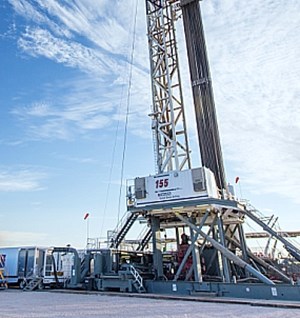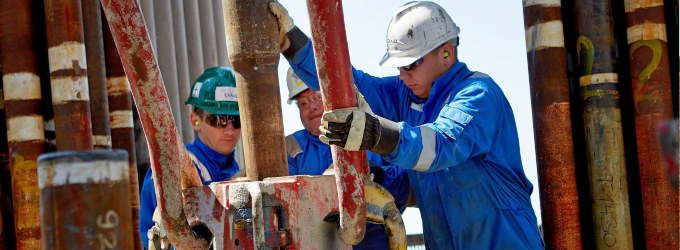(Bloomberg) – Chevron Corp. is on the cusp of reaching a production plateau in the largest U.S. oil field, allowing it to reap billions of dollars of additional cash flow in the next few years.

The company is cutting drill rigs and frac crews in the Permian basin of Texas and New Mexico as it approaches its long-term target of producing 1 million boed in the region, Bruce Niemeyer, president of the company’s shale business, said in an interview Wednesday. New wells will mostly offset natural declines, meaning production will stay around this level through 2040, enabling Chevron to reap $5 billion in annual free cash flow by 2027, he said.
“We’re going from growth to cash generation,” Niemeyer said at Chevron’s headquarters in Houston. “We’re already in the earliest phases of that. We’re making adjustments to rigs and the frack spreads which will reduce the amount of capital we’re spending on an annual basis.”
Several U.S. shale companies are cutting rigs this year as oil prices dropped below $70 a barrel, but Chevron’s slowdown is reflective of a decade-long strategy to build a large-scale operation in the world’s premier shale basin and then harvest the profits. The implications are significant. As the Permian’s second-biggest producer and one of its fastest-growing over the past few years, Chevron’s pullback is likely to be a headwind to overall U.S. output at a time when President Donald Trump is rallying for more growth.
“We’re getting to asset maturity in the Permian,” said Neil Mehta, an analyst at Goldman Sachs. “The growth curve is now shifting to a plateau and it’s all about how long can you hold that plateau.”
In conventional oil production, more crude tends to equal more profit. But shale is different. Production from shale wells trails off rapidly after they come online, meaning new wells are needed to replace old ones. This creates a perpetual need for new capital is the reason U.S. shale posted little profit in the late 2010s despite high production growth.
Chevron believes its Permian operations can crack this code. The oil giant increased production about 65% over the last five years and now operates at a scale and efficiency that means it can reduce capital spending without lowering production.
“A million barrels is the right plateau for us to carry out into the next decade,” Niemeyer said. “It’s the natural next phase. You want to create something at scale that ultimately supports our dividend objectives.”
Chevron has cut its drill rigs to 9 from 13 since the beginning of the year and reduced its frac crews to three from four. The cutbacks will help the company grow its free cash flow from the Permian by $2 billion over this year and next, reaching $5 billion annually by 2027, if Brent crude averages $60 a barrel.

